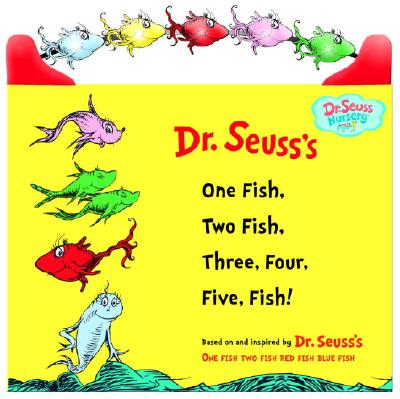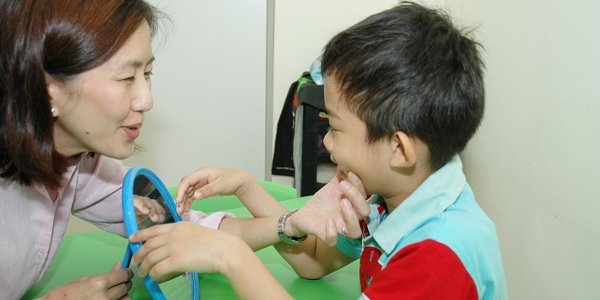How to Teach the “F” and “V” Sounds in Speech Therapy
Does your child have trouble saying “fish?” Ask your child to describe the picture above and listen to the “F” sound in the word, “fish.” Do they substitute another sound? Or perhaps they skip it altogether and just say “ish?” For many children, “fish” can be a tricky word to say. F, and its partner in crime, V, are tricky sounds for some children. In speech therapy, we usually check the developmental norms to decide if this sound should be targeted according to the child’s age. We can expect a child to master the F and V sounds around ages four and eight years (respectively). If the child is not saying these sounds, they might benefit from intervention and articulation therapy. They are similar in the placement of your articulators (teeth and lips) but different in the way they are produced. Someone saying an “F” sound is allowing a lot of air to escape around their teeth, while a “V” sound is made by creating vibrations of the vocal cords.
F Sound
Model the correct placement of your top teeth “biting” the lower lip for the “F” sound. Make the sound and hold it out to emphasize and model the airflow from around your teeth and out of your mouth. Encourage the child to do the same and cue them to hold their hand in front of their mouth to feel the airflow. When working on producing this sound, like any other, use the hierarchy of syllables in isolation first, followed by various positions in single words, then short phrases, sentences and finally in conversation.
Fish
Firetruck
Friend
Fan
Frisbee
Five
Flip
Fin
Off
If
V Sound
Model the correct placement, same as the “F” of the top teeth on the bottom lip. This time, encourage the child to place their hand on their or your throat to feel the vibrations of the vocal cords making the “V” sound. You can also have them place their hand in front of their mouth and feel less air escape. Just like “F” when working on producing this sound, like any other, use the hierarchy of syllables in isolation first, followed by various positions in single words, then short phrases, sentences and finally in conversation.
Practice Words:
Vroom
Van
Vast
Vat
Compare and Contrast
Compare and contrast the “V” and “F” sounds to help the child learn the difference. They can practice listening for the different sounds in your production (e.g., “listen to this sound, what is it?”) called “auditory discrimination” or sort words, items or cards into piles based on which ones have the “V” or “F” sounds. Also have the child produce words that vary only in the “V” and “F” sounds, called minimal pairs. These include:
Van / Fan
Surf / Serve
Fear / Veer
Off / Of
Fat / Vat
Foul / Vowel
Half / Halve
Life / Live
Some common themes and toys to promote these F sounds in articulation therapy include: Firetrucks, fish, friends and the word “fast.” Some common themes and toys to promote “V” are: Vroom (car play), vehicle, and valentine.




